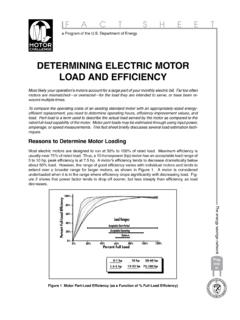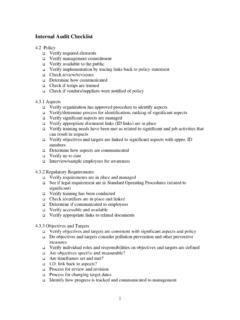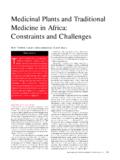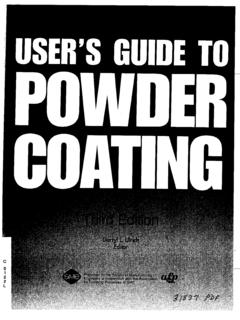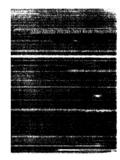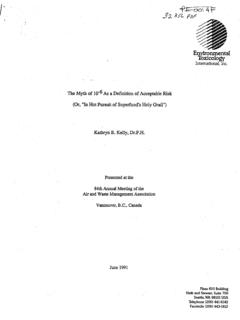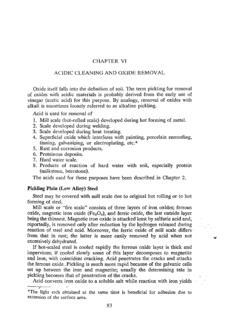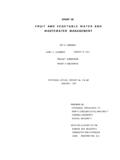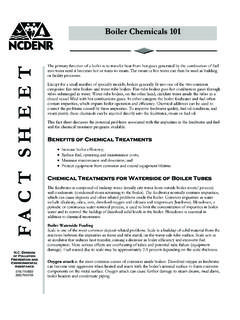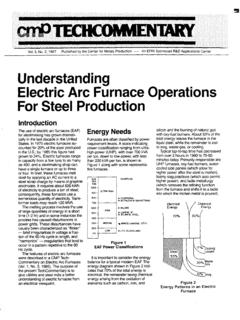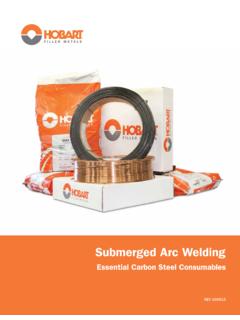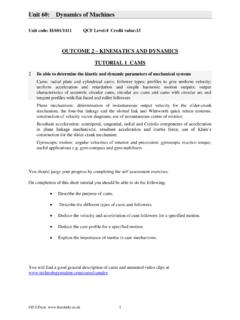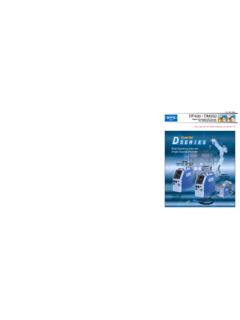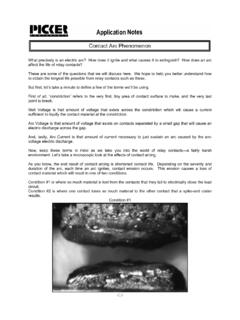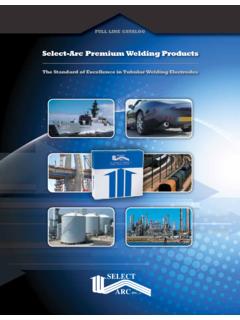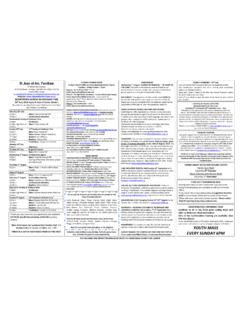Transcription of Understanding Electric Arc Furnace Operations - …
1 Introduction Over the past two decades the use of Electric arc furnaces (EAFs) for the production of steel has grown dramatically in the United States. In 1975 EAFs accounted for 20% of the steel produced; by 1996 the figure had risen to 39% and by the year 2000 (or shortly thereafter) could approach 50%. There are two major reasons for this trend-lower capital cost for an EAF steel- making shop and significantly less energy required to produce steel by the EAF versus the blast Furnace /basic oxygen Furnace method of the integrated steelmaker.
2 EAFs range in capacity from a few tons to as many as 400 tons, and a steelmaking shop can have from one to five furnaces. In brief, EAFs can be either ac or dc powered and they melt steel by applying current to a steel scrap charge by means of graphite elec- trodes. It requires about 360 to 400 kwh of electricity to melt a ton of steel; consequently, (Start of Power Supply) Arc Ignition Period Long Arc ! Main Melting Period these furnaces use a tremendous quantity of power. Transformer loads may reach 150 MVA.
3 The features of EAFs are described in a prior CMP TechCommentarytitled Introduction to Electric Arc Furnace Steelmaking (TC-107713). The purpose of this TechCommenraw (TC-107714) is to give utilities a more comprehensive understand- ing of the electrical Operations and energy usage, and to review some of the innovations that are making the EAF a very energy- efficient steel melter. n! Tapping Spout Hot Swt Meltdown Period L Liquid Bath Molten Metal Formation Period I-l! Short Arc ! Bath Meltdown-Heating Peiiod Figure 1.
4 Steel Melting Cycle. Typical Steelmaking Cycle Figure 1 shows a typical heat cycle, commonly referred to as the tap-to-tap cycle , for the EAF. The cycle starts with the charging of the Furnace with steel scrap. After the Furnace is charged and the roof is in place, the operator lowers the electrode or electrodes, each of which has its own regulator and mechanical drive. Current is initiat- ed and the electrodes bore through the scrap to form a pool of liquid metal. The scrap helps to protect the Furnace lining from the high- intensity arc during meltdown.
5 Subsequently, the arc is lengthened by increasing the voltage to maxi- mum power. Most modern furnaces are equipped with water-cooled panels in the upper half of the sidewall, rather than refractories, which allow for longer arcs and higher energy input to the Furnace . In the final stage, when there is a nearly complete metal pool, the arc is shortened to reduce radiation heat losses and to avoid refractory damage and hot spots. After rnelt- down, oxygen is injected to oxidize the carbon in the steel or the charged carbon.
6 In some opera- 1 OOO- 900- 800 - Utm-High 700 I 600 - High ooo- 400 300 - Medium 200 100 Low Examples Ttim Nucor Hidaan chaparral Northstar/BHP CO-Steel Raritan Inland Lukens Ameri-Steel Caparo Steel ~~ ~~ Figure 2. EAF Power Classifications. w Chemical 6045% Figure:3. Energy Patterns in an Electric Arc Furnace . tions, oxygen injection is started as soon as a liquid pool of metal is formed. The decarburization process is an important source of energy. In addition, the carbon monoxide that evolves helps to flush nitrogen and hydrogen out of the metal.
7 It also foams the slag, which helps to minimize heat loss and shields the arc-thereby reduc- ing damage to refractories. Energy Needs Institute classifies EAFs based on the power supplied per ton of fur- nace capacity. The power classifica- tion ranges and some representa- tive Furnace installations are shown in Figure 2. Most modern EAFs found in steelmaking shops are at least 500 kVA per ton and the trend is toward ultra-high-power furnaces in the range of 900 to 1000 kVA per ton of Furnace capacity. A typical energy balance (Sankey diagram) for a modern EAF is shown in Figure 3.
8 Depending upon the meltshop operation, about 60 to 65% of the total energy is elec- tric, the remainder being chemical energy arising from the oxidation of elements such as carbon, iron, and silicon and the burning of natural gas with oxy-fuel burners. About 53% of the total energy leaves the Furnace in the liquid steel, while the remainder is lost to the slag, waste gas, and cooling. I Just a decade ago tap-to-tap times had decreased from over 2 TechCommentarv The International Iron and Steel hours to 70-80 minutes for the effi- cient melt shops.
9 Continuing advancements in EAF technology now make it possible to melt a heat of steel in less than one hour with Electric energy consumption in the range of 360 to 400 kWhhon. EAF Operations utilizing scrap preheating such as the CONSTEELQ Process and the Fuchs Shaft fur- nace can achieve even lower cycle times. Most new EAF shops now aim for tap-to-tap times of between 50-60 minutes. These times are rapidly approaching those for basic oxygen Furnace Operations used in integrated steel mills. Charge Materials tially charged 100% scrap to the Furnace .
10 Although most EAF steel- makers producing long products, such as rebar and merchant bar, continue to use all scrap, some EAF shops today are supplement- ing the charge with other materials for producing higher quality prod- ucts. This is the case for some producers of high-quality bars and highly formable sheet products for automobiles. These charge materials include direct reduced iron, iron carbide, and pig iron. For more information on scrap quality and direct reduced iron see CMP Report 95-1. The trend toward the use of direct-reduced materials will continue to grow as more high-quality scrap containing low levels of residuals or undesirable elements becomes scarce.
